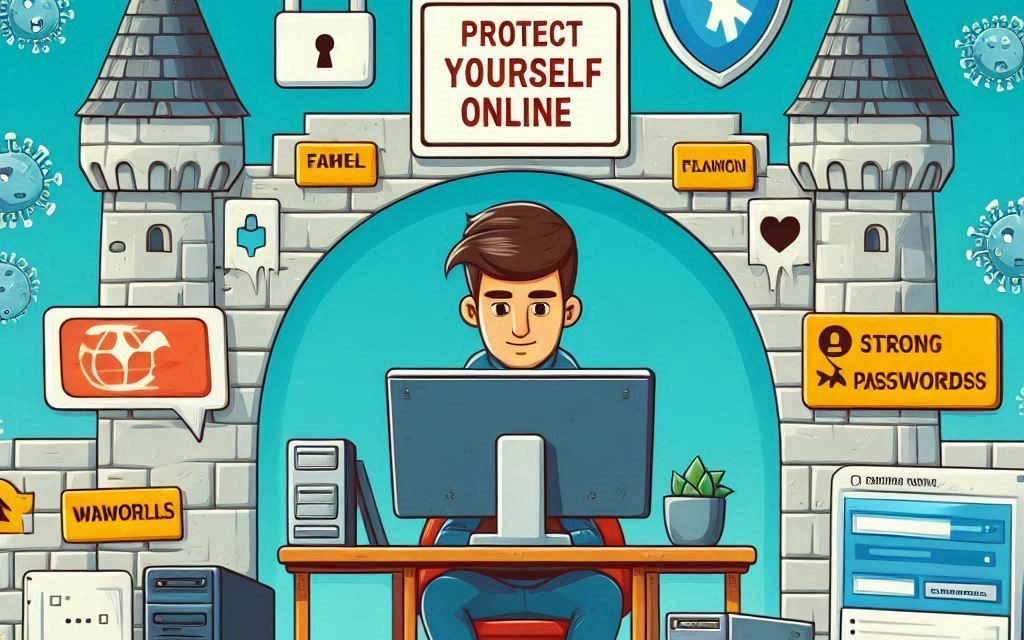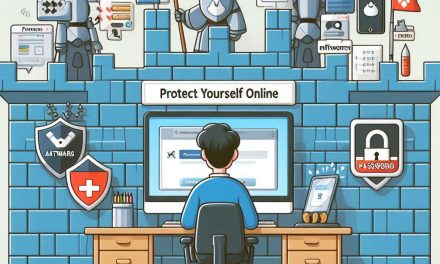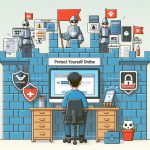In an age where our lives are increasingly intertwined with the internet, it is crucial to recognize the potential threats that lurk in the digital shadows. While the internet offers numerous benefits, including convenience, connection, and access to information, it also exposes individuals to a range of risks. From identity theft to cyberbullying, understanding these threats is the first step toward safeguarding yourself online. This article delves into the most significant threats individuals face on the internet and provides insights on how to protect yourself.
1. Identity Theft
Identity theft remains one of the most pervasive online threats. Cybercriminals can steal your personal information—such as Social Security numbers, bank account details, and credit card information—to impersonate you. They may use this information to make fraudulent purchases, open new accounts in your name, or even apply for loans.
How It Happens
Identity theft can occur through various means, including phishing emails, data breaches, or even social media oversharing. For instance, a seemingly innocuous post about your recent vacation could provide clues about your whereabouts, making it easier for criminals to target your home.
Prevention Tips
- Monitor Your Accounts: Regularly check your bank and credit card statements for unauthorized transactions.
- Use Strong Passwords: Ensure your online accounts have strong, unique passwords.
- Enable Two-Factor Authentication: This adds an extra layer of security by requiring a second verification step.
2. Phishing Scams
Phishing is a deceptive tactic employed by cybercriminals to trick individuals into revealing sensitive information. These scams often come in the form of emails, messages, or websites that appear legitimate but are designed to steal personal data.
Common Phishing Techniques
Phishing attempts can take various forms, including:
- Email Phishing: Fraudulent emails that look like they come from trusted organizations, urging recipients to click on malicious links.
- Spear Phishing: Targeted attacks aimed at specific individuals or organizations, often using personal information to appear more credible.
- Whaling: A form of spear phishing that targets high-profile individuals like executives.
Prevention Tips
- Be Skeptical: Always verify the sender’s email address and scrutinize the content for grammatical errors or inconsistencies.
- Avoid Clicking Links: Hover over links to see their true destination before clicking.
- Educate Yourself: Stay informed about common phishing tactics.
3. Malware
Malware, short for malicious software, encompasses various types of harmful programs designed to damage or exploit devices. This includes viruses, ransomware, spyware, and trojans, which can compromise your personal data and even render your devices unusable.
How Malware Spreads
Malware can spread through various channels, such as:
- Infected Downloads: Downloading software or files from untrustworthy sources.
- Email Attachments: Opening attachments in unsolicited emails can introduce malware to your system.
- Malicious Websites: Visiting compromised websites can lead to automatic malware downloads.
Prevention Tips
- Install Antivirus Software: Use reputable antivirus and anti-malware programs to detect and eliminate threats.
- Keep Software Updated: Regularly update your operating system and applications to patch vulnerabilities.
- Avoid Suspicious Links: Be cautious when clicking on links, especially in emails or messages from unknown sources.
4. Cyberbullying
Cyberbullying is the use of digital platforms to harass, threaten, or demean individuals. This form of bullying can have severe emotional and psychological effects, particularly among younger users.
Signs of Cyberbullying
- Harassment via Messages: Receiving repeated abusive messages or comments on social media.
- Exclusion from Online Groups: Being deliberately left out of social interactions or groups online.
- Impersonation: Someone creating fake accounts to tarnish your reputation.
Prevention Tips
- Report and Block: Use the reporting features on social media platforms to block and report abusive users.
- Maintain Privacy: Adjust privacy settings to control who can see your posts and interact with you.
- Talk About It: If you or someone you know is experiencing cyberbullying, encourage open communication with trusted friends or family.
5. Data Breaches
Data breaches occur when unauthorized individuals gain access to sensitive information stored by organizations. These breaches can expose personal information, including email addresses, passwords, and financial details.
The Impact of Data Breaches
When your data is compromised, it can lead to identity theft, financial loss, and long-term damage to your credit score. High-profile data breaches involving major companies can affect millions of users.
Prevention Tips
- Use Unique Passwords: Utilize different passwords for different accounts to limit exposure.
- Enable Breach Alerts: Services like Have I Been Pwned allow you to check if your email has been involved in a data breach.
- Change Passwords Regularly: Regularly update your passwords, especially after a known breach.
6. Social Engineering
Social engineering is a manipulation technique that exploits human psychology to gain confidential information. This can involve impersonating a trusted individual or using other deceptive methods to convince victims to share sensitive data.
Common Techniques
- Pretexting: Creating a fabricated scenario to obtain information from the target.
- Baiting: Offering something enticing to lure individuals into providing personal data.
- Quizzes and Surveys: Engaging users with seemingly innocent quizzes that collect personal information.
Prevention Tips
- Be Informed: Educate yourself about social engineering tactics.
- Verify Requests: Always verify the identity of individuals asking for sensitive information, especially through unsolicited calls or messages.
- Stay Skeptical: Trust your instincts; if something feels off, it probably is.
7. Online Scams
Online scams take many forms, including lottery scams, advance-fee fraud, and fake job offers. These scams often promise something enticing in exchange for personal information or payment.
Recognizing Scams
- Too Good to Be True: If an offer seems too good to be true, it likely is.
- Pressure Tactics: Scammers often create a sense of urgency to prompt quick action without thorough consideration.
- Unverified Sources: Be cautious of offers from unfamiliar or untrustworthy sources.
Prevention Tips
- Do Your Research: Investigate any offers or requests for payment before proceeding.
- Trust Your Instincts: If something feels suspicious, take the time to dig deeper or consult with trusted friends or family.
Conclusion
The online world offers countless opportunities, but it also presents significant threats that can impact individuals in various ways. From identity theft and phishing scams to malware and cyberbullying, being aware of these dangers is the first step toward protection. By taking proactive measures—such as using strong passwords, enabling two-factor authentication, and staying informed about the latest threats—you can significantly reduce your risk and navigate the digital landscape safely. Remember, a vigilant and educated approach to online safety is your best defense against the myriad threats that exist in the online world.









